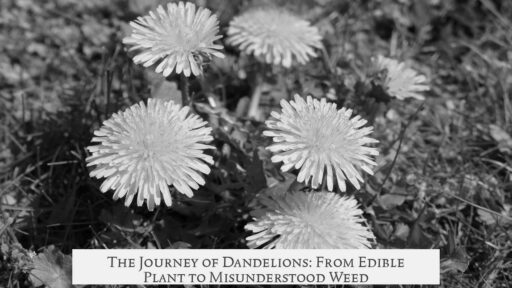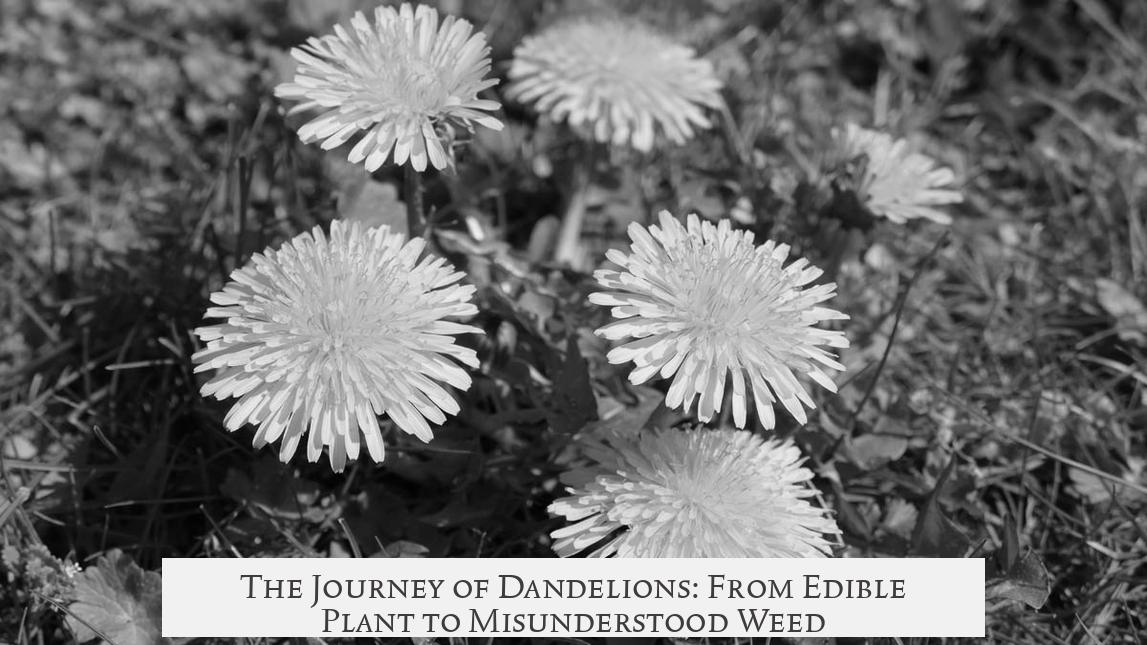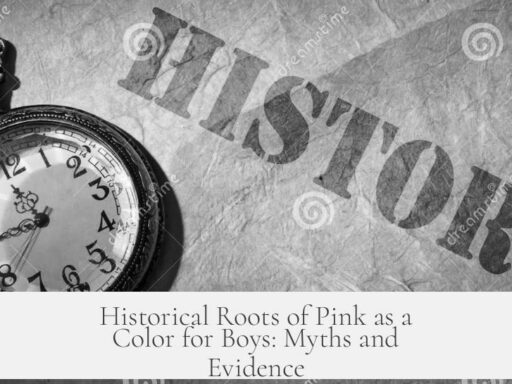The dandelion, despite being an edible and remarkably versatile plant, came to be classified as a weed primarily because of its aggressive growth, difficulty of removal, limited culinary appeal, and negative impacts on agriculture and landscaping.
The plant is an Old World import, introduced to North America largely by accident during the Columbian Exchange. While some dandelion species naturally occur in North America, the widespread varieties people recognize were brought from Europe or Asia. Their seeds spread easily, making a deliberate introduction unlikely but facilitating rapid naturalization across new territories.
Dandelions have a long history as a medicinal plant, acknowledged since early medieval Islamic scholarship. Notable figures like al-Rāzī and Avicenna discussed the plant for medicinal purposes around 900–1000 CE. Despite this, dandelions rarely featured prominently in formal culinary records, either in medieval Europe or early Middle Eastern cuisine. They were typically considered among the many wild greens available to peasants rather than a cultivated vegetable.
Victorians increased the plant’s culinary use somewhat, with records noting dandelions grown for markets and described as delicate salad greens. During the 19th century, interest in exotic or wild edible plants led to dandelions being harvested and cultivated to some extent. However, this enthusiasm did not translate into lasting popularity.
The main reasons for the plant’s shift from edible curiosity to classified weed are practical and economic:
- Regrowth and persistence: Dandelions have a strong, deep taproot reaching up to one meter deep. If this root is not fully removed, the plant quickly regrows, making eradication difficult. This poses a challenge for gardeners and farmers trying to clear land for other crops or ornamental plants.
- Inferior culinary qualities: Compared to alternatives such as arugula or cultivated salad greens, dandelion leaves are considered less palatable. Although flowers can be made into wines and roots roasted as coffee substitutes, these uses usually require added flavoring and rarely match the quality of established beverages. By the early 20th century, the dandelion had fallen out of favor as a deliberate food source.
- Agricultural and environmental downsides: Beyond aesthetic issues in lawns, dandelions present financial problems in cultivation. They reduce crop yields, slow hay drying, and act as hosts for pests like boll weevils and various harmful bacteria or viruses. The pollen from dandelions can contaminate honey and trigger allergies. They also compete aggressively with grasses, consuming more water and sometimes killing nearby plants.
- Competition with crops: While dandelions do attract pollinating bees, this can divert insects away from fruit-bearing plants, which may need them more. Although the actual impact is minimal, it contributes to the plant’s negative reputation in agricultural contexts.
- Availability of better alternatives: Other plants provide similar medicinal and ecological benefits without the marked downsides. Farmers and herbalists have access to species that enrich soil or treat ailments with fewer complications, making dandelions less attractive to maintain.
Despite these factors, the dandelion maintains niche roles in some culinary and cultural traditions. In parts of Greece, the plant forms part of “horta,” or boiled greens, and remains a symbol of traditional foraged foods. Victorian soft drinks like Dandelion & Burdock still reference the plant’s heritage. Occasional culinary uses appear in vegetarian and French cuisines, typically featuring blanched leaves harvested under controlled conditions.
Modern horticulture occasionally cultivates dandelions on a small scale for specialty foods or herbal remedies, but these instances are exceptions. The general public and agriculture recognize the plant primarily as a weed due to its dominance in pastures, gardens, and lawns.
| Factor | Impact on Dandelion Status |
|---|---|
| Introduction and spread | Accidental Old World import led to widespread naturalization |
| Medicinal use | Long recognized but overshadowed by better remedies |
| Culinary use | Modest Victorian use but generally inferior taste and appeal compared to other greens |
| Growth characteristics | Strong taproot and easy regrowth complicate removal |
| Agricultural impact | Harms crops, slows hay drying, hosts pests, allergenic pollen |
| Competition with crops | Diverts pollinators, but minimal real effect |
| Alternatives | Better plants available for soil, feed, medicine |
- Dandelions began as accidental Old World imports with medicinal and minor culinary value.
- Their deep taproot and strong regrowth led to challenges in cultivation and removal.
- Inferior taste to other greens and diminishing culinary demand reduced their food appeal.
- Agricultural and environmental downsides contributed to their negative reputation.
- Better alternatives for medicinal and ecological roles exist, diminishing reliance on dandelions.
- Today, they remain a common weed with niche culinary uses in some traditional and regional cuisines.
How did the dandelion, an edible and remarkably versatile plant, come to be classified as a weed?
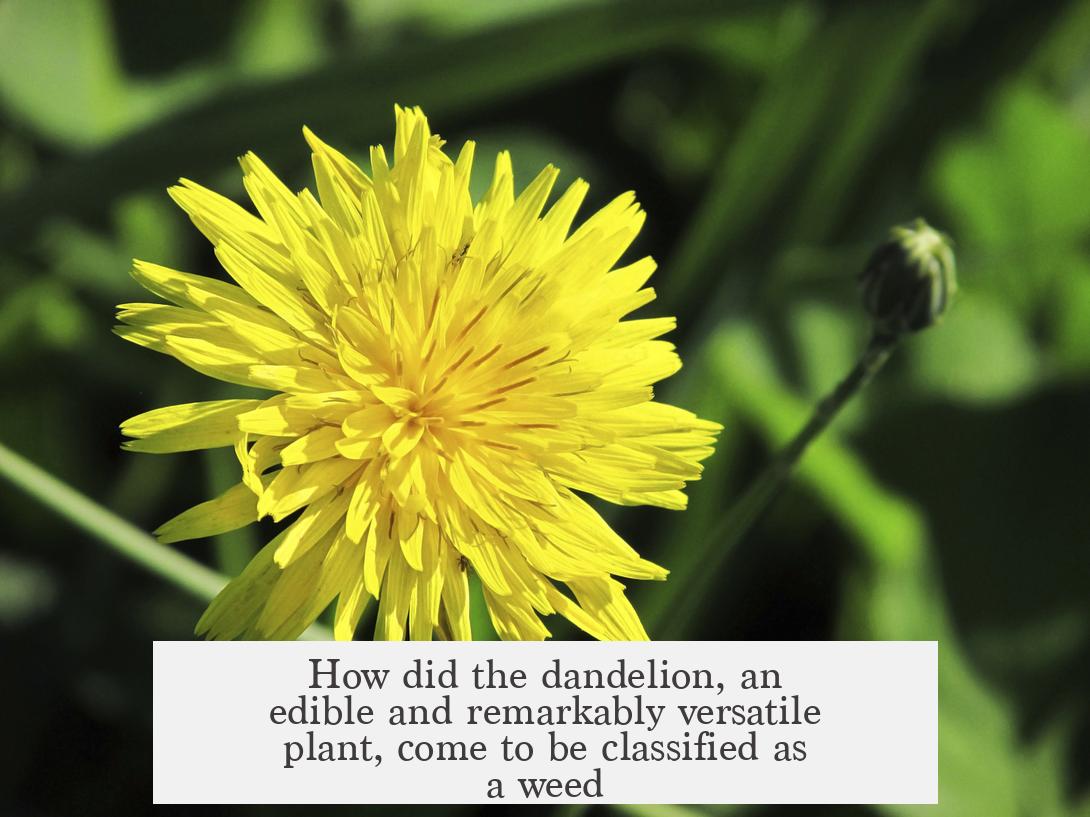
The dandelion, despite its edible and medicinal qualities, becomes a weed due to its tough growing habits, low culinary appeal compared to other greens, and the problems it causes in agriculture and lawn care. But how does a plant with so many good points get such a bad rap? Let’s dig into the story.
Dandelions are a classic example of a plant’s rise and fall from grace. They started as Old World imports, likely hitching a ride to North America during the Columbian Exchange—probably uninvited guests rather than exotic garden imports. While there are native North American relatives, the dandelions we recognize mostly came from Europe or Asia. Nobody seems quite sure if people intentionally planted them, but their seed-carrying flights on the wind made accidental introductions almost inevitable.
History shows dandelions were more than just roadside nuisances. Early medieval Islamic scholars such as Abū Bakr Muhammad ibn Zakariyyā al-Rāzī mention their medicinal uses around 900 CE. Famous physician Avicenna even dedicated a whole chapter to them a century later, demonstrating their significance in herbal medicine. However, despite these uses, dandelions never earned a spot at the royal banquet table. They remained more of a utilitarian plant, noted for medicine rather than gourmet cooking.
As for cuisine, the record is surprisingly sparse. Medieval European peasants likely tossed dandelion greens into stews or pottages, but no grand culinary works list them as prized ingredients. Ironically, the more careful record-keepers like Peter Brears and Al-Warraq skip them entirely. The Victorian era changes the picture slightly. Thanks to a Victorian gardening and culinary curiosity craze, dandelions find their way into market gardens and even salad bowls. Records from Boston in 1836 mention dandelions grown specifically for food, and English sources from 1846 describe blanched dandelion leaves as delicate salads. They weren’t haute cuisine but certainly caught some attention.
So if dandelions were edible, medicinal, sometimes delicious, why do we label them weeds? Several practical factors turned the tide. For one, dandelions have a powerful, deep taproot. It can bury itself up to a meter deep and quietly regenerate a whole plant if left behind. Gardeners and farmers know this well: pull a dandelion, leave a piece of root, and it laughs at your efforts by growing right back. This makes clearing a patch painstaking and frustrating, especially if you want to replace dandelions with something more useful.
Another strike against dandelions comes from the taste department. Their flavor is often bitter or grassy, and compared to other leafy veggies like arugula or spinach, they don’t hold up well. The flowers can ferment into wines, but those need flavor boosters such as lemon to be palatable. Their roots can be roasted and brewed into coffee substitutes—but coffee itself or chicory often come out on top in flavor. By the early 20th century, even encyclopedias quietly admit dandelions dropped out of culinary use almost entirely; their benefits just didn’t outweigh the hassle and inferior taste.
On the agricultural front, dandelions introduce a mixed bag of problems. Beyond annoying hobby gardeners, they reduce crop yields, slow hay drying, and act as unwelcome hosts for pests like boll weevils and disease-causing microbes. Furthermore, they drink a lot of water—more than most grasses—giving them an edge in competition. Though commonly thought to help pollinators, they actually pull bees away from more valuable fruit trees. While this impact is smaller than feared, it feeds the perception of dandelions as nuisances.
Additionally, better alternatives exist for the roles dandelions once filled. Other plants provide medicinal, soil-enriching, and animal feed benefits without some of the dandelion’s headaches. This makes their presence less justifiable in managed landscapes and farms.
Today, dandelions live mostly on the outskirts of culinary and ecological acceptance. They linger as niche ingredients in some traditional recipes. For instance, in Greece, they’re part of “horta,” a category of wild greens known as “radikia,” often boiled and served simply—honoring a long-standing historical way to eat them. In the UK and Ireland, vegetarian restaurants occasionally offer tender, blanched dandelion leaves. There’s even the traditional English soft drink “Dandelion & Burdock,” which keeps dandelion in the public imagination, if not in the garden beds of mainstream agriculture.
So, the answer is a mix of botanical stubbornness, underwhelming taste, and economic realities. The dandelion’s deep roots, dominant growth, and agricultural drawbacks overshadow the plant’s edible and medicinal perks. Its role shifts from honored herbal remedy and emergency food source to one of the most persistent, unwanted guests in lawns and fields—the quintessential weed.
Why should this matter to you?
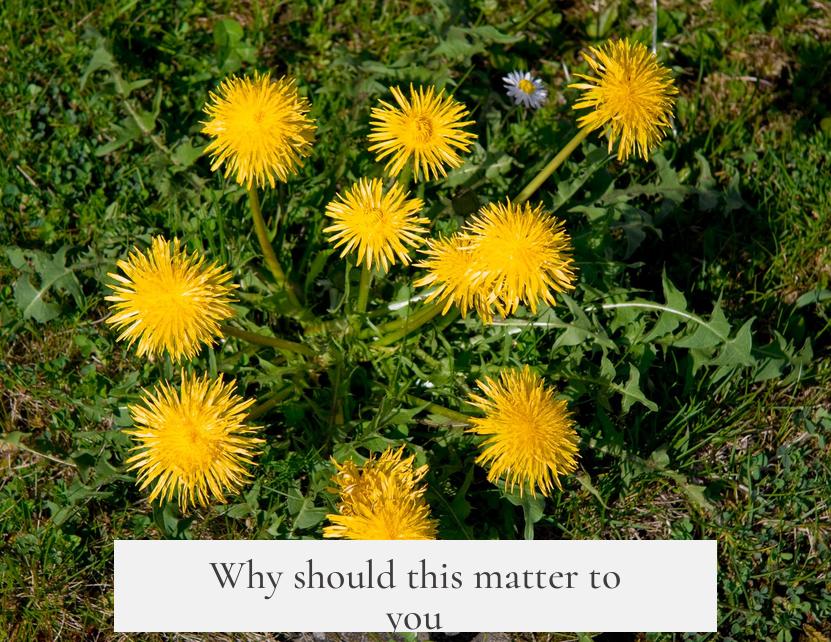
Next time you spot a bright yellow puffball in your lawn, think twice. This plant wears many hats—medicinal, edible, rustic salad green—but just can’t shake the weed label. Could we give dandelions a second chance, cultivating them more cleverly for their benefits? Or are their drawbacks too sticky to escape? This ancient plant reminds us how closely utility, perception, and human values shape what we grow—and what we weed out.
Quick tips if you’d like to enjoy dandelions without the headache:
- Harvest young leaves in early spring for milder flavors.
- Blanch leaves under cover to reduce bitterness, just like Victorian salad makers.
- Try dandelion flowers in herbal teas or homemade hedgerow wine, mixing with citrus to balance taste.
- If you want to keep dandelions in your garden, confine them to pots or controlled beds to avoid invasiveness.
- For gardeners dealing with unwelcome dandelions, always remove as much root as possible to prevent regrowth.
In summary, the dandelion’s journey from ancient medicine cabinet to lawn troublemaker is a fascinating blend of nature’s persistence and human choice. Its story shows how a plant’s usefulness alone doesn’t guarantee respect—it must also fit our culinary tastes, cultural norms, and practical land use. Whether you call it a weed or a wild edible, the dandelion challenges us to reconsider what we value in the plants around us.
